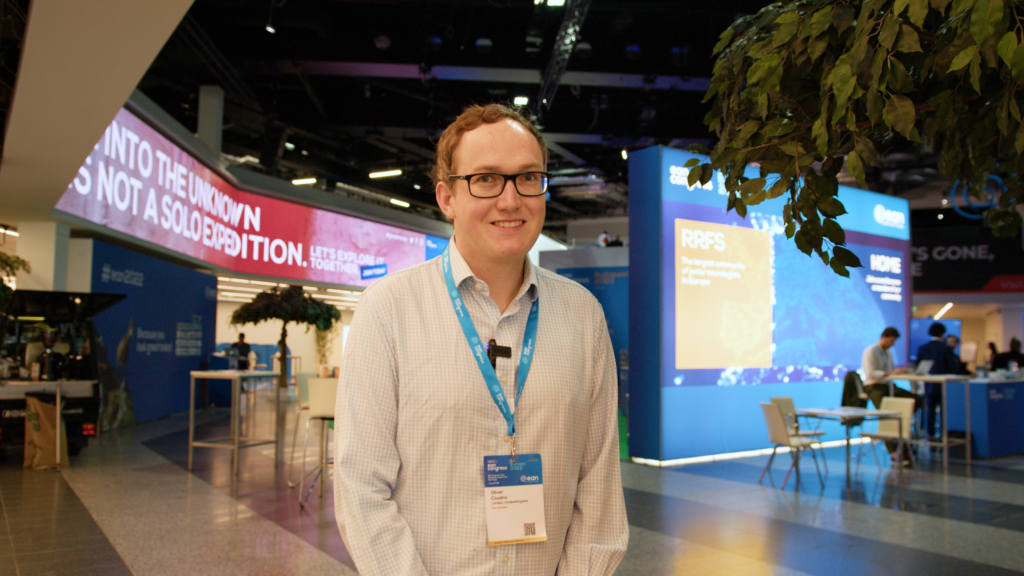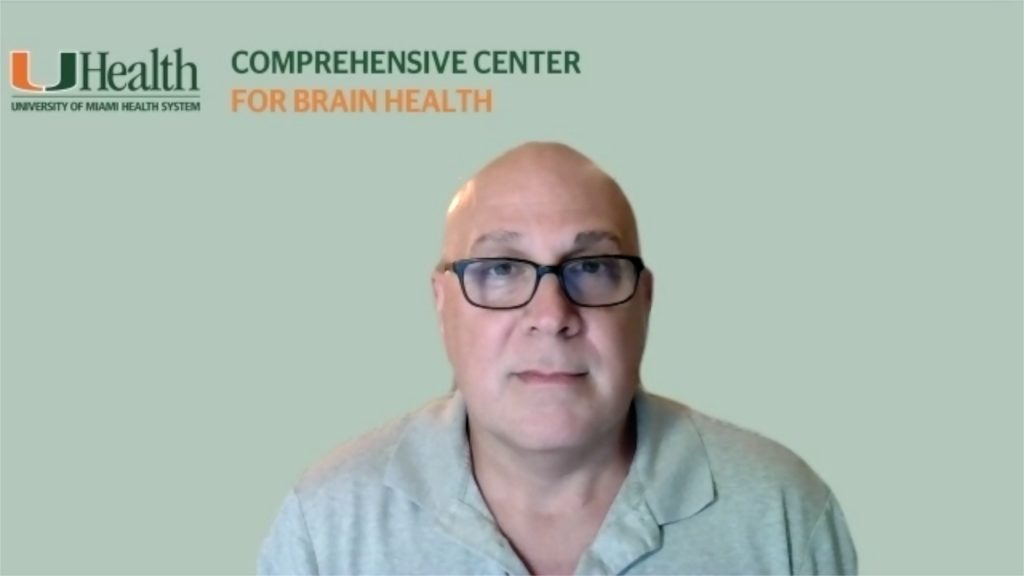touchNEUROLOGY coverage of AD/PD 2025
Our understanding of Alzheimer’s disease has grown significantly in recent years, with biomarkers playing an increasingly important role in both clinical practice and drug development.
In this interview, we speak with Dr Anthony Caggiano, Chief Medical Officer and Head of R&D at Cognition Therapeutics, and Lisa Ricciardi, the company’s Chief Executive Officer. They discuss the design and findings of the phase II SHINE trial evaluating zervimesine (CT-1812) in mild to moderate Alzheimer’s disease, including important biomarker and clinical insights presented at recent international conferences. They also reflect on promising data from a study in dementia with Lewy bodies (DLB) and how these results are shaping the company’s next steps.
Transcript
Nicky: So to get us started, can you provide an overview of the phase II SHINE study’s design and its primary objectives in evaluating zervimesine in mild to moderate Alzheimer’s disease?
Tony: Yeah, sure. SHINE was our first phase II study investigating the effects of zervimesine in individuals with mild to moderate Alzheimer’s disease. The primary objective was to assess safety and tolerability. However, we also explored a wide range of secondary outcomes, including clinical measures and biomarkers—many of which were discussed at the AD/PD meeting.
This was a six-month study that enrolled 153 participants. They were randomized evenly across two doses of CT-1812 (zervimesine) versus placebo. Throughout the treatment period, we monitored safety, tolerability, and clinical outcomes using standard measures common to Alzheimer’s trials.
We also conducted a sub-study that collected cerebrospinal fluid (CSF) from about half the participants, and plasma samples were drawn from all participants to assess biomarker changes.
Initial results were reported at the AAIC meeting in July or August last year, and we later presented a pre-planned subgroup analysis at the CTAD meeting in Fall 2024. Most recently, additional biomarker data from a subset of patients were presented at the AD/PD meeting.
Nicky: I’m really excited to hear the data, but before we get to that, could you briefly explain the significance of biomarkers in Alzheimer’s disease?
Tony: Sure. For a long time, biomarkers were used primarily to explore the pathophysiology of Alzheimer’s disease—to understand what’s happening in the brain. Years ago, we confirmed that amyloid accumulation was a key part of the disease process. While there’s ongoing debate about the extent of amyloid’s role, there’s no question that it’s part of the underlying pathology.
More recently, we’ve seen abnormal tau accumulation as well—tau being a breakdown product of neurodegeneration. We can now also track neurodegeneration and neuroinflammation through biomarkers like neurofilament light chain (NFL) and GFAP, which indicate glial activation.
Originally, these biomarkers were primarily research tools. But then came antibody therapies targeting amyloid, and early approvals—like Biogen’s—were based on changes in biomarkers, particularly using PET imaging.
What we’ve since learned—from Biogen, Lilly, and Eisai—is that clinical outcomes can be measured just as reliably as biomarker changes, and both tend to track together over time. So today, the approval of Alzheimer’s therapies is rightly based on traditional clinical outcomes, but biomarkers still play a key supporting role. For antibodies, for instance, tracking the change in amyloid PET signal helps determine dosing and treatment duration.
For non-antibody approaches like ours, biomarkers help demonstrate biological activity and disease modification, such as reductions in neurodegeneration or neuroinflammation. They complement the clinical picture rather than serve as standalone endpoints for approval.
Nicky: Thank you, that was an excellent overview. So, going back to the AD/PD conference, what was observed in biomarkers among participants in that study?
Tony: To recap, when we first presented SHINE study data at the AAIC meeting last summer, we saw promising trends indicating slowed clinical progression in the overall study population.
The clearest biomarker signal was a trend toward reduced neurofilament light chain (NFL) in participants treated with CT-1812 (zervimesine), suggesting a potential slowing of neurodegeneration even within six months.
At CTAD, we presented a pre-planned subgroup analysis of participants who started the study with lower plasma p-Tau217 levels. All participants had elevated levels diagnostic of Alzheimer’s, but we specifically looked at those in the lower range. This wasn’t our original idea—similar subgroup analyses were done by Lilly and Eisai in their antibody studies, where lower baseline p-Tau217 levels were associated with better treatment responses.
p-Tau217 is a phosphorylated tau protein and is thought to reflect overall disease burden, incorporating both amyloid and tau pathology. It’s more a measure of underlying pathology than clinical symptoms.
Given that our therapy doesn’t clear amyloid directly but may disrupt its interaction with synaptic targets, we hypothesized we might see a similar effect. And we did. Participants with lower baseline tau had a much more robust and sustained clinical response than the broader study population or those with higher baseline tau.
At AD/PD, we presented follow-up biomarker data from that same low-tau subgroup. Similar to the clinical findings, we saw stronger biomarker responses: a clear reduction in NFL, a reduction in GFAP, and a trend toward reduction in p-Tau217. These findings support the idea that the biological effects we’re seeing correspond with the clinical improvements.
Nicky: It’s really interesting. It feels like there’s been so much progress in Alzheimer’s research—it really does impact everyone.
Lisa: We agree, Nicole. As Tony often says, for a long time biomarkers were all we had. Now, we have strong clinical data that complement those findings. At Cognition, although we’re a small company compared to the big players, our research has been very thoughtfully focused.
We don’t have unlimited funding, but we’ve strategically chosen areas that help advance our understanding of the disease. Given how widespread Alzheimer’s is, we’re proud to contribute meaningfully to the science and clinical discourse.
Nicky: Excellent. So, taking these findings into account, how will they impact future clinical trials with zervimesine?
Tony: We’re currently planning the next phase of studies, which includes meetings with the FDA and laying out a potential approval pathway.
The biomarker findings give us confidence that we’re seeing real biological activity at the doses and durations we’re using. They confirm we’ve chosen the right dose and support our direction moving forward.
What’s changed more significantly is the idea of using p-Tau217 as a selection biomarker. That’s new in the past few years. Given what we’ve seen—and what others like Lilly and Eisai have demonstrated—we’re planning to either select patients based on low baseline p-Tau217 or use it in a stratified analysis. That should help ensure that treatment effects are more readily detectable.
Nicky: From Cognition’s perspective, is there any more data expected later this year at future conferences?
Tony: Yes. We recently presented results from our study in dementia with Lewy bodies (DLB), which also used CT-1812 (zervimesine). Alzheimer’s is primarily a disease of amyloid, while DLB and Parkinson’s disease dementia are characterized by alpha-synuclein pathology—though many DLB patients also have amyloid.
This was a phase II study similar to SHINE, and we reported the topline data in December. A more detailed presentation was delivered by Dr. Jim Galvin, our study director from the University of Miami.
In that study, we saw consistent slowing of progression across multiple symptom domains, including neuropsychiatric symptoms, motor function, daily living activities, and cognition. These results are particularly striking because every other DLB trial to date has failed.
We plan to present additional DLB data later this year, including patient baseline characteristics, use of other medications, and biomarker profiles. We’ll also examine how different outcome measures evolve over time—some may move together, others not—which will help us better understand both disease progression and treatment effects.
Lisa: The only thing I’d add, Nicola, is that the response in the DLB trial was more than promising—it was extraordinary. This is a space where all previous trials have failed, and we saw robust effects across multiple domains. The enthusiasm from patients and families has been overwhelming. For a small company, it really feels like we’re making a significant difference. <span style=”color: #0000ff”><b>
Citation: CT1812 demonstrates promising biomarker data in Phase 2 SHINE study, AD/PD 2025, touchNEUROLOGY, 21 May 2025
Disclosures: Dr Anthony Caggiano is Chief Medical Officer and Head of R&D at Cognition Therapeutics. Lisa Ricciardi is Chief Executive Officer at Cognition Therapeutics.
Register now to receive the touchNEUROLOGY newsletter!
Don’t miss out on hearing about our latest peer reviewed articles, expert opinions, conference news, podcasts and more.













